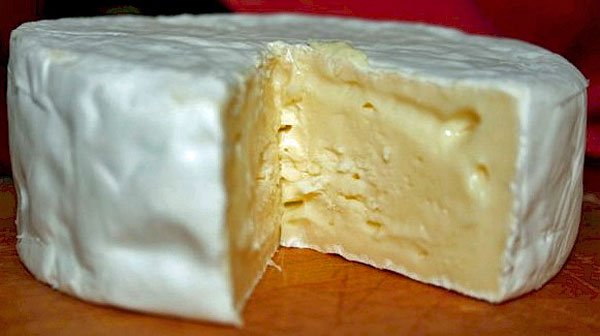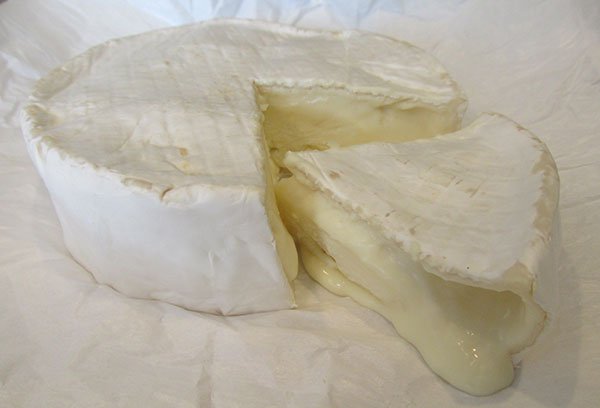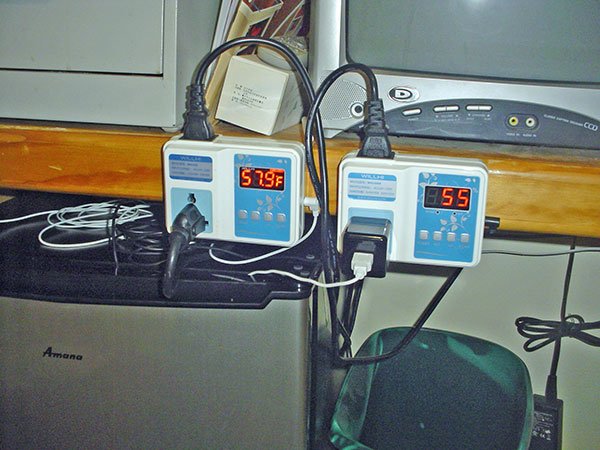
This is the 4th in a 5 part series for beginner cheese makers. If you want to make Camembert, start at the beginning by clicking here.
If you have already made Camembert using our simple recipe in Part 3 (click here), you might be interested in making some changes to it. Hopefully, you kept notes about exactly what you did (nobody ever manages to follow the directions perfectly!). Now, the key is to change only one variable at a time. That way, you will know absolutely what the effect was. For example, if you think you can do better milk-wise, change your milk but nothing else. And, of course, as always, keep notes!

Many record sheets can be found in cheese making books. This one, from Ian Truer’s great blog- Much To Do About Cheese can be printed by clicking here
Ways to change the simple recipe in Part 3:
Ingredients:
Calcium chloride (C14) – Adding calcium chloride is generally considered optional if you are using raw milk, although there are times when you would want to use it even then (click here). It is sometimes added to the milk with the cultures or 5-15 minutes before adding the rennet. It is always added before the rennet. The quantity is usually the same as the quantity of rennet you are using, but you can use up to 1/4 teaspoon per gallon of milk.
Penicillium candidum (C8-2) – Instead of adding it to their milk, some folks spray the Penicillium and Geotrichum (C7) on their cheeses. When you begin the process of air drying your cheeses for 24-48 hours in the molds, mix about 1/4 tsp salt into 4 oz. of sterilized water and add 1/8 tsp of Penicillium candidum and 1/32 tsp of Geotrichum into this and allow it to re-hydrate until you are ready to salt your cheeses. Spray your cheeses immediately after salting and again after they have been ripening for 1 or 2 days. (You can store this mixture in your atomizer for up to 60 days, refrigerated.)

From Goat Nutrition
Milk:
You can use goat’s milk or sheep’s milk with our recipe, but there will be a few adjustments:
If using either one, lessen the amount of rennet by 20-25%. Also, let the temperature of the curds in the pot go down 2 degrees Fahrenheit (1 degree Centigrade) while cutting and stirring.
If you are using goat’s milk, always add calcium chloride, which is otherwise optional. (There is a recipe for Goat’s Milk Camembert in one of our previous blog articles – click here.)
If you are using sheep’s milk which has been frozen, add calcium chloride to prevent weak curds. (There is a recipe for Sheep’s Milk Camembert in one of our previous blog articles – click here.)

Sara Hunt’s Sheep’s Milk Camembert during the blooming phase.
If adding cream:
To make our recipe into a Triple Creme Camembert, replace 10-12 ounces of whole milk with heavy cream. The cream can be ultra-pasteurized, but the milk can’t. Follow the directions in Jim Wallace’s recipe (click here).

Jim Wallace’s Triple Creme
The make:
A word about measuring the pH:
At some point, when you are ready to advance to the next level of cheese making, it will be a good idea to buy a pH meter. This will tell you the level of acidity of your milk which will determine when you move from step to step in the process of making cheese. A measurement of 7 is considered neutral. A number less than 7 is acidic and over 7 is alkaline. Fresh milk is normally at a pH of 6.7.

From our blog article – Using a pH Meter for Cheese Making
Ripening:
Times for ripening with the cultures and rennet: These times vary widely. Some call for no ripening time with the cultures and then 90 minutes with the rennet. Others call for a 60/60 split and others call for more time with the cultures (90 minutes) and less time with the rennet (30 minutes). The only way to really know when to add the rennet is if you measure the pH, which should be at 6.4-6.5. And, of course, you will know when the rennet has done it’s job when you test for the clean break.
Cutting the curds:
Some cheese makers don’t cut the curds at all- they ladle them directly into the molds. This requires a longer drying time before salting. One drawback is that it usually causes the curds to stick to the mats when you try to turn the molds over.

Draining the curds:
Some folks use butter muslin to drain the curds (for 20-30 minutes) before they put them in the molds. This shortens the time they need to air dry the cheeses in the molds.
Times for air drying vary widely (from 8-48 hours).
When the cheeses are ready for salting, the pH should be 4.7-4.8.
Salting the curds:
Some cheese makers drain the curds for 24 hours, then salt them and let them drain for another 24 hours, as in Jim Wallace’s intermediate recipe (click here).
And, instead of rubbing salt on the surface of their cheeses, some folks add salt to the whey before draining the cheeses. For this recipe, you would pour off 1/3 of the whey first, then add 4 tablespoons of course salt to the curds before ladling them into the molds.
Others choose to brine their Camemberts – If you want to try this, save your whey and make a saturated brine with it by adding salt to a quart of whey (approximately 1 tablespoon or until the salt no longer dissolves). Then, brine your cheeses for 1 hour (2 hours/pound). Start the float with salt sprinkled on the top surface of the cheese so it doesn’t pick up unwanted bacteria as it floats. At the 1/2 hour point, flip and sprinkle with salt again.

Photo courtesy of Cheese Forum
Some cheese makers like to cover their cheese in ash (Ash) after brining to help prevent “slipped skin.” Ash can also be applied to the cheese either before or with dry salting.

These are Louise Dutton’s Camemberts from “A Year in the Life.” The one on the left was coated in ash.

This is how it looked with the mold beginning to grow over it.
1st ripening:
In a lot of recipes, the lid of the box is left ajar during the “bloom” part of the process. If your cheeses are very moist, and moisture is dripping down on them from the inside of the lid, you definitely need to keep the lid slightly open. However, if this isn’t happening, and you have plenty of room in your box for air to circulate around your cheeses, you can keep the lid shut. That way, the moisture from the cheeses keeps the humidity in the box up.
2nd ripening:
You have options with this part of the process: You can move your ripening box to the bottom of your refrigerator to extend the ripening process, or you can keep your box at 50-55F. If you keep it at the higher temperature, your cheese will have a stronger flavor than if you age it in a normal refrigerator. So, your decision can be based on how you prefer your cheese to taste.
Wrapping your cheeses (at least for the first 2 weeks) may not be necessary. If you choose not to wrap, you will probably need to provide a source of humidity in your ripening box. You can use a cup of water with a sponge or butter muslin sticking out of it and a small cup of salt to hold the humidity (for amounts of salt click here). It will help you to have a hygrometer which will tell you the temperature and the humidity in your box (click here).

From our blog article- Controlling Humidity in Your Cheese Cave
Ways to make different kinds of Camembert:
Some like to combine blue cheese with Camembert as in Jim Wallace’s recipe for CamBlu – click here

CamBlu
Adding flavor:
Alcohol – Some cheese makers spray their cheese with unpasteurized beer or wine during the mold-growing period. Do this every other day until the cheeses are coated with white mold.

Camembert soaked in apple brandy from La Fromagerie
Another way to add flavor is to soak the finished cheeses in apple brandy for 24 hours before serving (see 200 Easy Homemade Cheese Recipes, p.110)
Infusion with mushrooms, saffron, dried lavender, coriander, or other ingredients – It is best to infuse the flavor of whatever you have chosen into your milk before making the cheese. Directions for this can be found in the recipe for Mushroom-Infused Camembert in Artisan Cheese Making at Home, p.147.
Adding seeds and spices – If you are going to add seeds or spices, use sparingly, because a little goes a long way (try 1 teaspoon per gallon of milk). First, cover them with water and boil them for 5-10 minutes to clean and soften them. When you strain off this water, you can add it to your milk before renneting. Add the cooked ingredients to the curds after you have drained off most of the whey and you are about to put the curds in the molds.
Coating your cheese with herbs and/or spices – Again, boil them for 5-10 minutes and add the water to your milk before adding your rennet. Mix them with your salt and rub them onto the surface of your cheeses before the first ripening.
We love to hear about your ideas, so send us pictures and tell us about your cheese – info@cheesemaking.com














































































































































